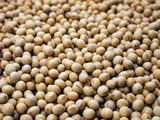
Students research soybean food uses in this activity developed from CASE Food Science curricula.
- Subject:
- Agriculture
- Career and Technical Education
- Material Type:
- Activity/Lab
- Lesson Plan
- Author:
- Owl Nest Manager
- Date Added:
- 03/14/2022

Students research soybean food uses in this activity developed from CASE Food Science curricula.

Let’s make Cheetos! In this food science unit, students walk through careers in the food industry, sensory analysis of food, the formulation of a product, branding and marketing of a food product, and finally making physical product of fried cheese puffs. Written by Tyler Schindler

This project brings the gourmet food truck craze from cities across North America to your classroom and home town. Many of these food trucks aren’t selling your typical hot dogs and fries, they are coming up with interesting foods for people to eat on the go. Students will develop recipes for inventive food and drink menu items, including planning safety and sanitation needs, equipment, and other elements of a food truck business. Written by Kristyn Jones, Norris High School, NE

Assigning students particular roles can be an effective way to organize groups and simulate job site communication. Assigning a ‘foreman’ for groups in an agriculture education classroom helps to distribute responsibility among group members and ensures accountability for all students’ participation. As students practice assuming greater responsibility, they can develop new skills. Designed by Donald Fowler.
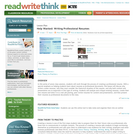
Students will create a beginning resume that represents their current work experience and demonstrates their knowledge of rhetorical situations for professional writing.

This single day lesson plan covers hydration through a sports performance lens. Students within this lesson will be asked to take notes using the presentaion provided and complete the Hydration Math worksheet. Key Terms: Hydration, Sweat Loss, Electrolytes

Analyze the impact and contributions of various segments of the hospitality and event planning industries on economies, cultures, and the environment.

This lesson presents an overview of the seven areas of Plant Systems: plant science, crop science, soil science, pomology, olericulture, floriculture, and landscaping and nursery. Learners then complete a career report over one career from Plant Systems.
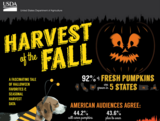
The various infographics show one application of marketing and communications on the topic of agriculture. Here, the United States Department of Agriculture compiled data and designed it graphically to share about agriculture, its impacts on communities, and consumer education.

This activity is meant to follow a lesson about world or international agriculture. It gives the students an understanding of exports, imports, and trade embargos by using M&M’s as agricultural products. By Katie Griffith, Nebraska Agriculture, Food, and Natural Resources educator

This lesson presents an overview of the Food Science Industry. Learners will learn about proper nutrition, create informational flyers on food-borne pathogenic organisms, and create their very own food product label.

This course gives an overview of integrated pest management focusing on corn and soybeans and introducing the basics of scouting, plant pathology, management of insects, diseases, and weeds, and discusses pesticides and human and environmental topics related to their use.
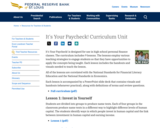
It's Your Paycheck! is designed for use in high school personal finance classes. The curriculum contains three sections: "Know Your Dough," "KaChing!" and "All About Credit." The lessons in each of these sections employ various teaching strategies to engage students so that they have opportunities to apply the concepts being taught. Each lesson includes black-line masters of the handouts and visuals needed to teach the lesson.

Students will start their Career and Technical Student Organization (CTSO) year with activities that apply important career readiness skills, including teamwork, communication, leadership, creativity, and utilization of technology. They will also begin to understand the connection between what they are learning in the classroom and their future career path through one (or more) CTSOs.

Overview: Presented in five consecutive standard-period classes, students will think critically about an experience in their lives that have made a lasting, positive impact for which they are grateful. Students will write and hone rough drafts, give and solicit peer review and teacher critique, and develop a three-minute oral presentation of the final draft to their class. Lesson by Jarvis L. Reed.

Students will be able to use correct terminology for livestock (e.g. bovine, steer, ewe, ram). This lesson is used in exploring agriculture, animal science lesson. Written by Kathryn Savat.
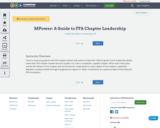
This is a resource guide for the FFA chapter advisor that wants to help their officers grow in their leadership ability, make their FFA chapter student led and student run, have a competent, capable chapter officer team every year, and be the Advisor of the chapter and not the person responsible for every aspect of the chapter's operation. Mpower is made possible through the generous support of Bayer CropScience as a special project of the National FFA Foundation.

Pair this activity with lessons on selective breeding. Students will identify desirable genetic traits in apples and use a coin flip to simulate the steps and time involved to breed a new cultivar of apple. (Photo by Tom Paolini on Unsplash.com)

This lesson introduces students to beef, pork, and lamb retail cuts, as well as assesses their ability to correctly identify each retail cut.

This lesson introduces students to beef, pork, and lamb wholesale cuts.